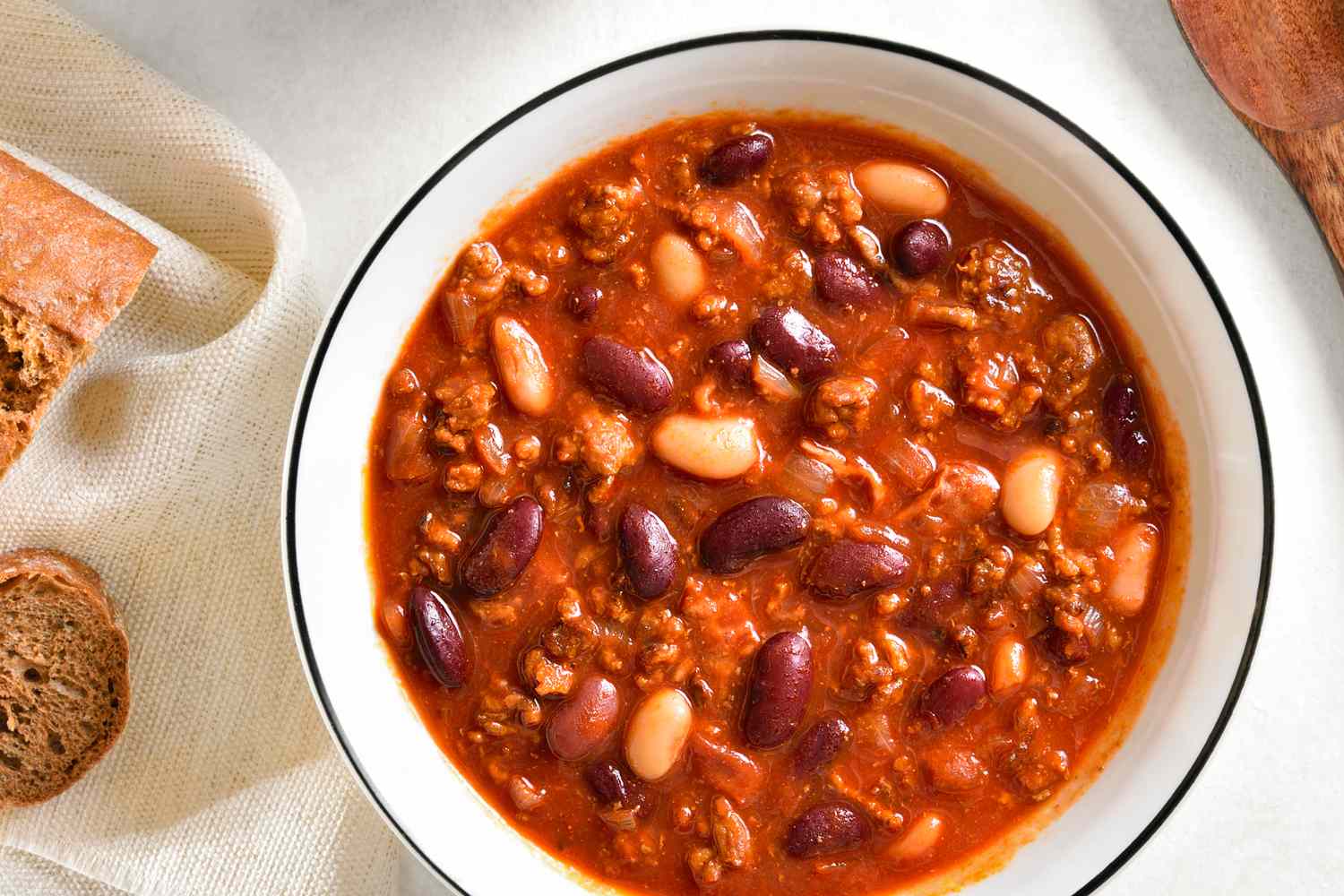:max_bytes(150000):strip_icc():format(jpeg)/20250918-SEA-milk-jessieyuchen-04-f37b67671ec14765ac6a46f2672b319f.jpg)
We taste-tested 18 cartons of whole milk you’re likely to find at your local supermarket. To find the very best one, we sampled each without knowing which brand was which. Our winner is Whole Foods 365 Whole Milk, but we also crowned four runners-up.
Milk has always been a steady presence in my life. When I was growing up, my mom insisted I drink three cups of milk a day—one with each meal. A few weeks ago, I found myself at the All-You-Can-Drink Milk Stand at the Minnesota State Fair, where, for a $3 entry fee, I witnessed some truly bizarre milk-chugging contests. Naturally, I tried my own hand at the stand. Though I only managed three measly cups before tapping out, watching others guzzle milk made me realize that milk can be refreshing and endlessly chuggable. Milk isn’t just for cereal and dunking chocolate chip cookies—it’s a key ingredient in many coffee beverages, smoothies, and pancake batters. And, of course, you can drink it straight. The question is: Which brand is worth buying?
To find the best whole milk, our editors taste-tested 18 widely available brands. We stuck to nationally available brands, and tested conventional, organic, and milk from grass-fed cows side by side. We chilled and poured each into cups, then sampled them in random order without knowing which brand was which. We then tabulated the results and crowned an overall winner, as well as four worthy contenders that we’d be happy to keep at home.
Serious Eats / Jessie YuChen
The Criteria
Great whole milk should taste creamy and slightly grassy. It should be smooth and rich, with a touch of sweetness. It should be full-bodied and velvety—not watery or chalky—with enough thickness to coat the tongue without being too heavy. It should be opaque and either white or white with a faint golden or yellowish cast that beta-carotene in grass can give milk from grass-fed cows. Good milk should not taste as if the flavor of the carton had seeped in, and it should certainly never taste sour or bitter.
Overall Winner
365 by Whole Foods Whole Milk
“This has some of that mammalian flavor I like…” wrote our editorial director, Daniel, who gave this brand top marks. Our associate culinary editor, Laila, appreciated its grassy notes and natural sweetness. Meanwhile, our senior social media editor, Kelli, enjoyed its extra creamy “vanilla ice cream vibe.”
Runners-Up
Farmland Whole Milk
Our editors found this milk well-balanced and pleasantly milky. “Good, milky, mammalian,” wrote Daniel. Our visuals editor, Jessie, and our associate editorial director, Megan, both agreed that it tasted the way milk should: rich and, well, milky. Similarly, Laila found it well-balanced: “Sweet with a touch of pleasant tang, never edging into anything off-tasting.”
Horizon Organic Whole Milk
This milk had a pleasant, mild flavor compared to most. “This is fine but mild,” wrote Daniel. Jessie similarly found it light and a bit watery, while Kelli thought it was “thinner than expected.” Megan considered its lightness a strength compared to some of the other contenders: “Inocuous, which is actually high praise,” she wrote in her notes. “Mild, bland, doesn’t taste sour.”
Maple Hill Creamery Whole Milk
This milk was creamier than the other contenders. “It reminded me of melted milk-flavored ice cream,” wrote Laila, who liked its sweetness and faint grassy notes. Jessie thought it was sufficiently milky and had good flavor. Kelli was the only editor who wasn’t as big a fan of the texture: “This one coats my mouth in a way I don’t like.”
Trader Joe’s Whole Milk
Our editors were fans of this milk’s classic, creamy dairy profile. “Not sour! No carton flavor! Yay! Favorite so far,” wrote Megan. Laila picked up on a gentle sweetness in the beverage: “No distinctive notes, yet still enjoyable.” In other words, it was a pleasure to drink.
Serious Eats / Jessie YuChen
The Contenders
- a2 Milk® Vitamin D Whole Milk
- Bowl & Basket Whole Milk
- Farmland Whole Milk
- Good & Gather Organic Whole Milk
- Hood Whole Milk
- Horizon Grass Fed Whole Milk
- Horizon Organic Whole Milk
- Kirkland Signature Homogenized Whole Milk
- Maple Hill Creamery Whole Milk
- Organic Valley Grassmilk Whole Milk
- Organic Valley Whole Milk
- Stonyfield Organic Whole Milk
- Stop & Shop Whole Milk
- Trader Joe’s Organic Whole Milk
- Trader Joe’s Whole Milk
- Wegmans Whole Milk
- Whole Foods 365 Organic Whole Milk
- Whole Foods 365 Whole Milk
Key Takeaways and Conclusion
Most mass-market whole milk contains just two ingredients: milk and added vitamin D, which does not affect the flavor or consistency of the milk. (By law, reduced-fat, low-fat, and skim milks must have vitamins A and D added after processing, because fat removal reduces natural vitamin A and D content. However, there is no legal requirement for adding vitamin D to whole milk.) Only one of our 18 contenders—runner-up Maple Hill Creamery Whole Milk—has a single ingredient: whole milk. Every other brand we tasted is fortified with vitamin D3.
Some whole milks are clearly labeled as homogenized. Homogenization is a high-pressure process that breaks down fat globules in milk, creating a more uniform texture and preventing the cream from separating. In non-homogenized milk, the cream naturally rises to the top as the milk sits. All of the milks we tasted—including the winners and runners-up—are homogenized. Many small producers, such as New York’s Ronnybrook Farm Dairy and Family Farmstead and Vermont’s Strafford Creamery, take the opposite approach: They emphasize that their milk is non-homogenized, not fortified, and proudly sold with a cream top.
We tested both organic and non-organic whole milks side by side. Generally, the non-organic options outperformed the organic ones in terms of both flavor and overall appeal. Before the taste test, many editors said they liked grass-fed milk, but few could reliably identify it during the taste test. Some tasters noted grassy, floral, or barnyard-like notes that stood out from the pack, while others interpreted those same flavors as sour or tangy. Some appreciated the complexity of grass-fed milk, while others preferred the straightforward sweetness of conventional and organic whole milk from cows that were not grass-fed.
Our Testing Methodology
All taste tests are conducted with brands completely hidden and without discussion. Tasters taste samples in random order. For example, taster A may taste sample one first, while taster B will taste sample six first. This is to prevent palate fatigue from unfairly giving any one sample an advantage. Tasters are asked to fill out tasting sheets, ranking the samples according to various criteria. All data is tabulated, and results are calculated with no editorial input to provide the most impartial representation of actual results possible.


